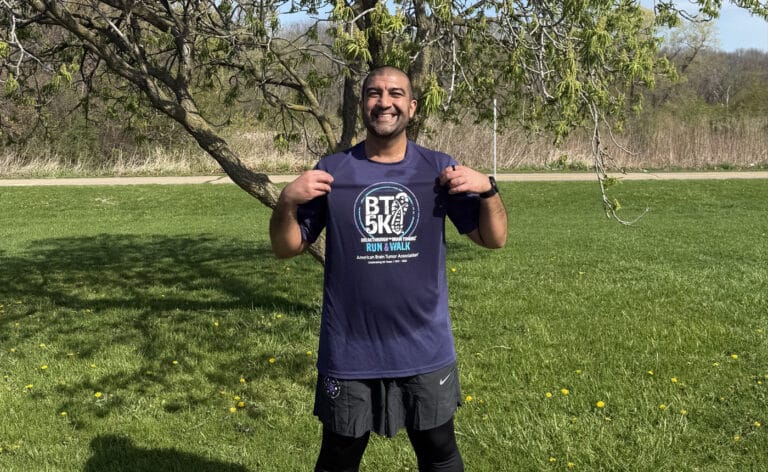New devices tackle heart disease and diabetes
Above photo: CardioMEMS pulmonary artery sensor. Courtesy of St. Jude Medical, Inc.
A new era in medicine is emerging. Implanted body sensors can monitor critical indicators, dispense therapeutic doses of medication and alert patients and physicians to troubling changes—all in real time. This innovative technology is offering big promise in combating top causes of morbidity such as heart disease and diabetes.
Heart disease is the leading cause of death in America, and diabetes ranks seventh. Both diseases play a leading role in rising hospital admissions and healthcare costs, with the annual direct and indirect cost estimate for diabetes alone at $245 billion. And with hospitals being penalized for readmissions, technological advances are helping bring healthcare costs under control.
Help for heart failure
Robert Gordon, MD, a cardiologist with NorthShore University HealthSystem, uses the implantable CardioMEMS device in a number of his heart patients. The CardioMEMS HF (Heart Failure) System is the first and only FDA- approved monitoring device proven to significantly reduce hospital admissions and improve patients’ quality of life.
With the device, cardiologists can remotely monitor pulmonary artery pressure, reducing complications and hospitalizations from congestive heart failure. The tiny sensor, implanted in a patient’s pulmonary artery, wirelessly sends data to a cardiologist’s computer or smart phone. Physicians can remotely monitor patients and adjust medications as needed, before the onset of more debilitating symptoms that often lead to hospitalization.
“The CardioMEMS pulmonary artery pressure sensor allows me to keep my patients at home by monitoring early signs of worsening congestion,” Gordon says. “It enables me to safely and efficiently guide therapy remotely instead of having [patients] come to the office for those same adjustments.”
The CardioMEMS device is smaller than a dime. In a minimally invasive outpatient procedure, Gordon inserts the device through the patient’s groin and into the heart’s pulmonary artery. Wire loops on the device anchor the sensor to the pulmonary artery and monitor changes in heart pressure. Fluctuations in pressure can be detected in real time and care can be administered soon thereafter, a major advance over non-tech tracking of symptoms.
A controlled study was conducted five years ago on 550 patients to measure the device’s efficacy. Data from the trial showed a 37 percent relative risk reduction in readmission for heart failure.
A new tool in the battle of blood sugar
More than 29 million Americans were living with diabetes in 2012, according to the Centers for Disease Control and Prevention. Every five minutes, two people die of diabetes-related causes and 14 are newly diagnosed. If current trends continue, as many as 1 out of every 3 adults in the United States could have diabetes by 2050.
Louis Philipson, MD, PhD, director of the Kovler Diabetes Center at University of Chicago Medicine, has been focused on fighting diabetes for the past 30 years. He is hopeful about the increased use of digital technology in the monitoring and treatment of diabetes, particularly continuous glucose monitors (CGM)—the new gold standard of blood-sugar testing technology. These involve a small wire, as thick as a hair, that is inserted under the skin. The wire takes a blood sugar reading every five minutes, and the results are transmitted to a smart phone or CGM receiver.
It’s a “revolution,” Philipson says. For the first time, patients get an alert on their blood sugar levels without having to stop what they’re doing to do fingersticks throughout the day. The readings from the device, such as the ones made by Dexcom, can be accessed by doctors and caregivers anywhere in the world in real time, he says.
The device particularly helps the 1.25 million Americans living with type 1 diabetes; these individuals do not produce insulin and need to regularly monitor their blood sugar levels. The 10 percent of people with type 2 diabetes who take insulin can benefit from this approach too, Philipson says.
Most people with diabetes need to have two separate devices—a CGM and an insulin pump—that do not talk to each other. Using both systems is not without drawbacks, including the need to implant and wear two devices, problems with reporting accuracy due to incomplete connections to cell phones or dedicated receivers and the fact that the devices do not yet give insulin automatically. Current insulin pumps give programmed and on-command amounts of insulin but do not automatically adjust. They require the user to read and analyze the data and make dosage decisions.
Those limitations are driving current research. Several companies are testing devices to improve the interplay between the sensor and the pump so that the two devices can talk to each other and work in cohesion.
The smart pump, also referred to as an artificial pancreas, is a breakthrough FDA-approved technology that is expected to hit the market in mid- to late-2017. The smart pump will measure blood sugar and then increase or reduce the dosage of insulin as needed.
Several Kovler faculty members are engaged in medical partnerships to look for ways to improve pump sensors. They are working with Medtronic, a medical technology company, along with researchers at the Illinois Institute of Technology and the University of Chicago to not only calculate the proper insulin dose, but also develop sensors that predict drops in blood sugar before they occur. This is especially hopeful news for those on intensive insulin management regimens or those with a tendency for low blood sugar.
The promise of these new developments is life-changing. “Having diabetes absolutely sucks,” Philipson says. “It’s bad not only for the person who has it, but for the whole family.
It’s really an invisible kind of hurt. … People can be terrorized, literally terrorized, by worrying about their high or low blood sugar.”
These procedural breakthroughs represent great advancements in alerting users to potential problems, improving information for physicians and improving care for patients.














